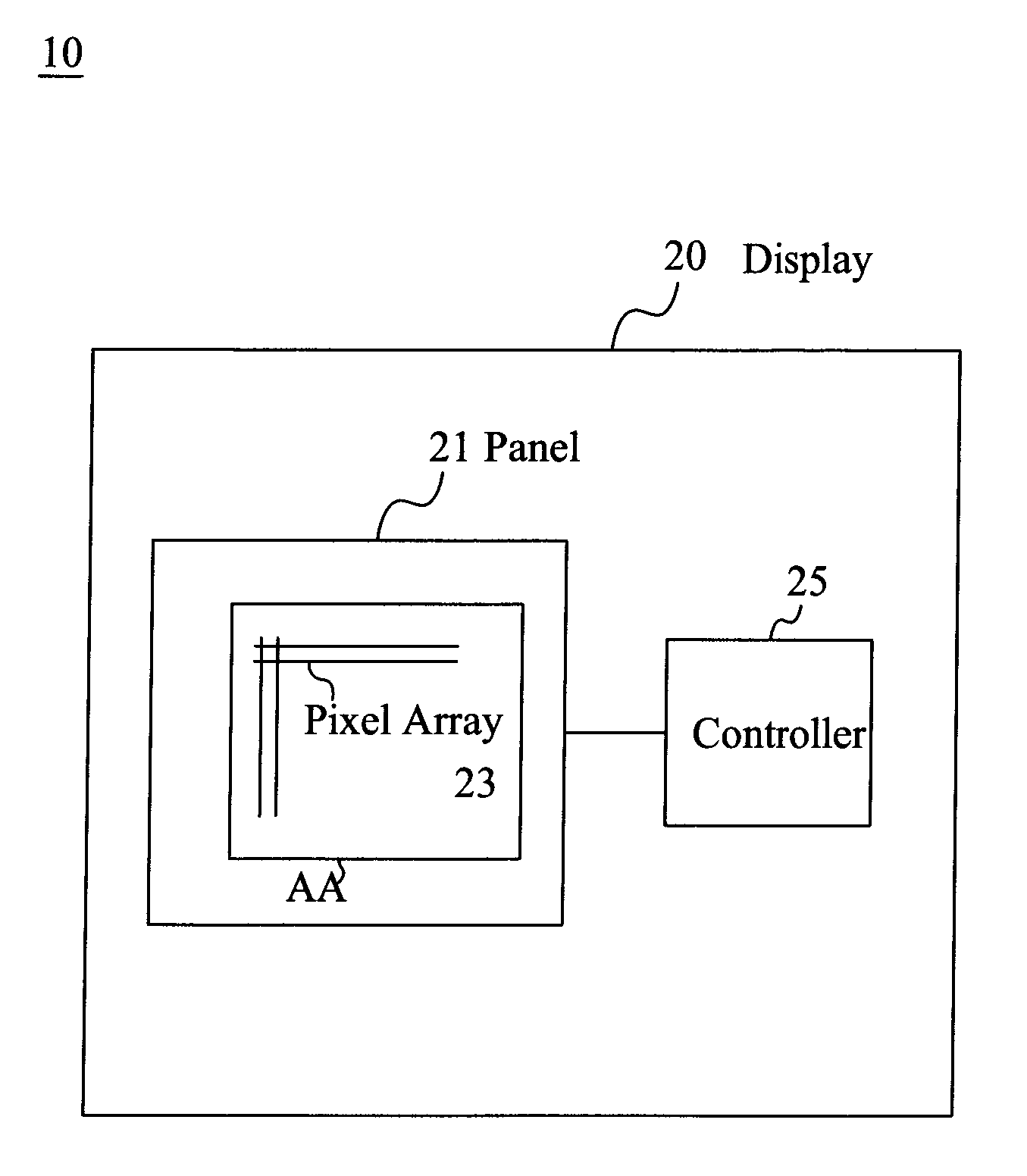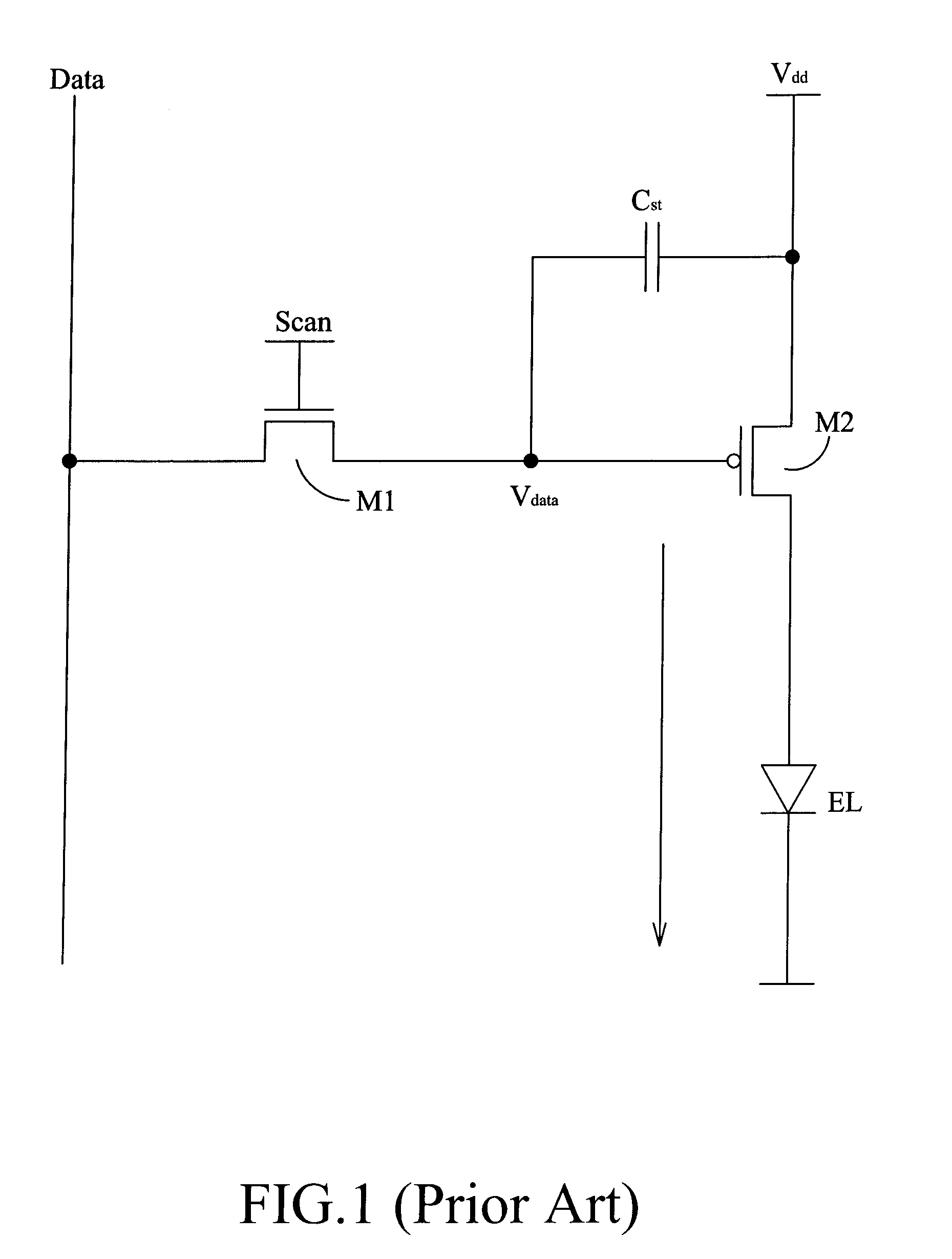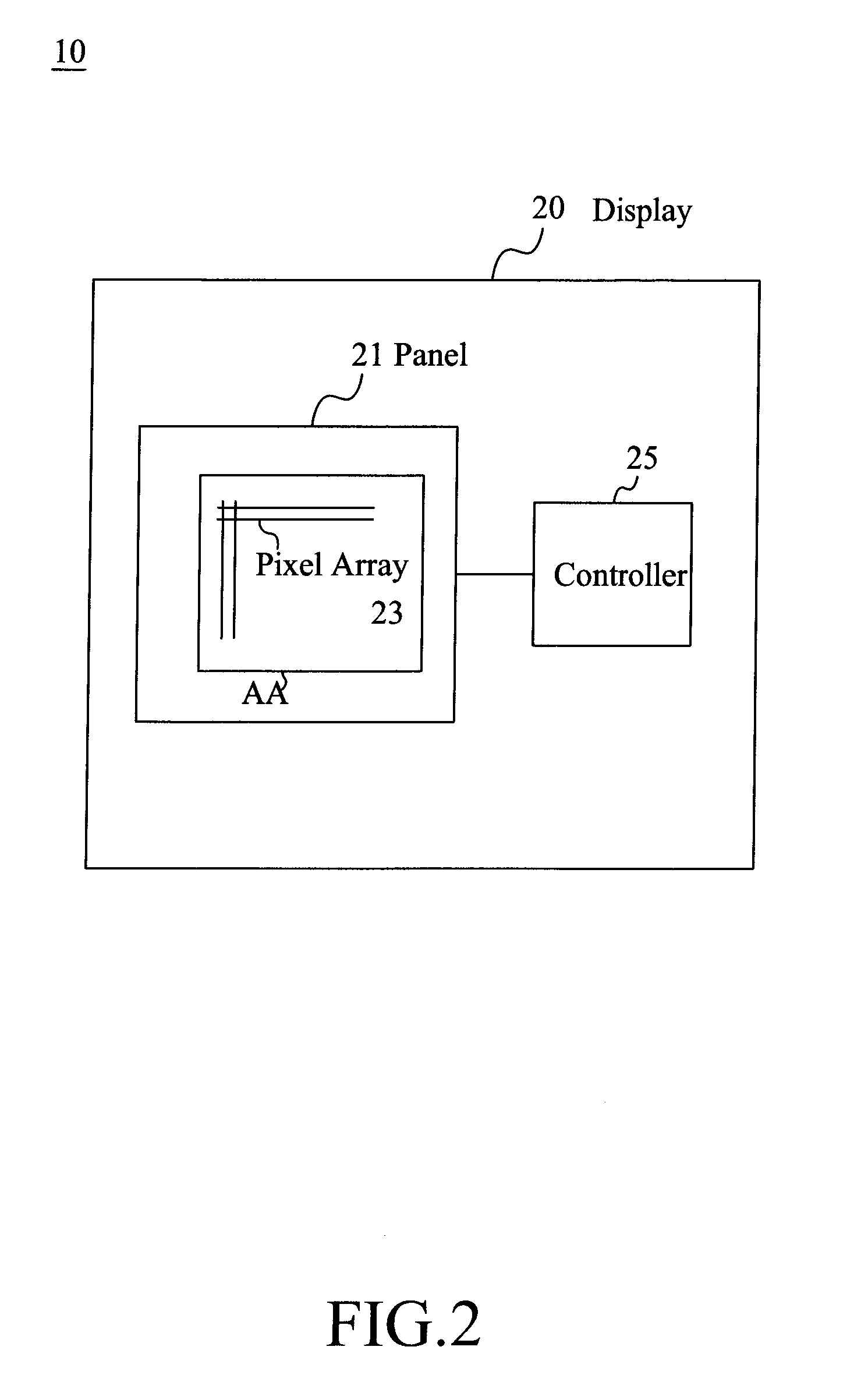LED pixel driving circuit
- Summary
- Abstract
- Description
- Claims
- Application Information
AI Technical Summary
Benefits of technology
Problems solved by technology
Method used
Image
Examples
Embodiment Construction
[0016]Reference will now be made in detail to the preferred embodiments of the present invention, examples of which are illustrated in the accompanying drawings. While the invention will be described in conjunction with the preferred embodiments, it will be understood that they are not intended to limit the invention to these embodiments, particularly those sizes, scales, and relative positions shown in the drawings.
[0017]FIG. 2 is a block diagram of an electronic device 10 according to an embodiment of the present invention. In this embodiment, the electronic device 10 could be a TV, a mobile phone, a digital camera, a personal digital assistant (PDA), a notebook computer, a desktop computer, a television, a global positioning system (GPS), a car media player, an avionics display, a digital photo frame, a portable video player, etc. In this embodiment, the electronic device 10 includes an AMOLED display 20 and a controller 25. The AMOLED display 20 has a panel 21, and the panel 21 ...
PUM
 Login to View More
Login to View More Abstract
Description
Claims
Application Information
 Login to View More
Login to View More - R&D
- Intellectual Property
- Life Sciences
- Materials
- Tech Scout
- Unparalleled Data Quality
- Higher Quality Content
- 60% Fewer Hallucinations
Browse by: Latest US Patents, China's latest patents, Technical Efficacy Thesaurus, Application Domain, Technology Topic, Popular Technical Reports.
© 2025 PatSnap. All rights reserved.Legal|Privacy policy|Modern Slavery Act Transparency Statement|Sitemap|About US| Contact US: help@patsnap.com



